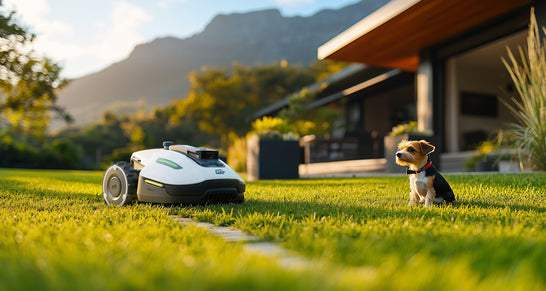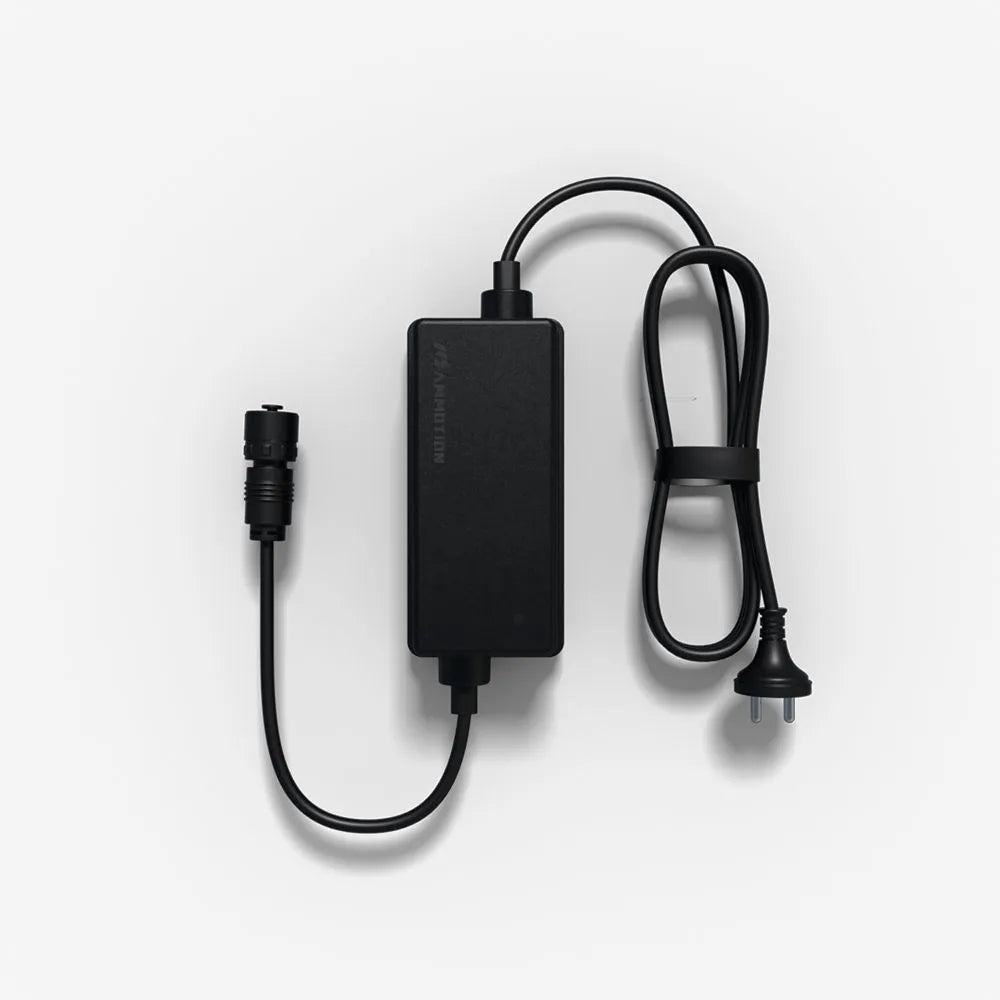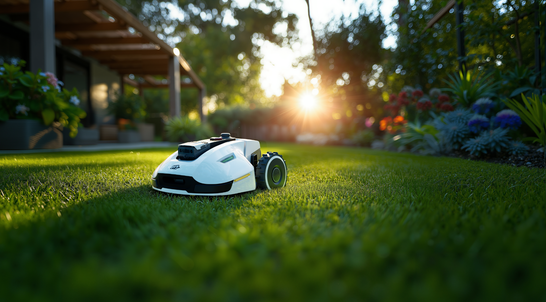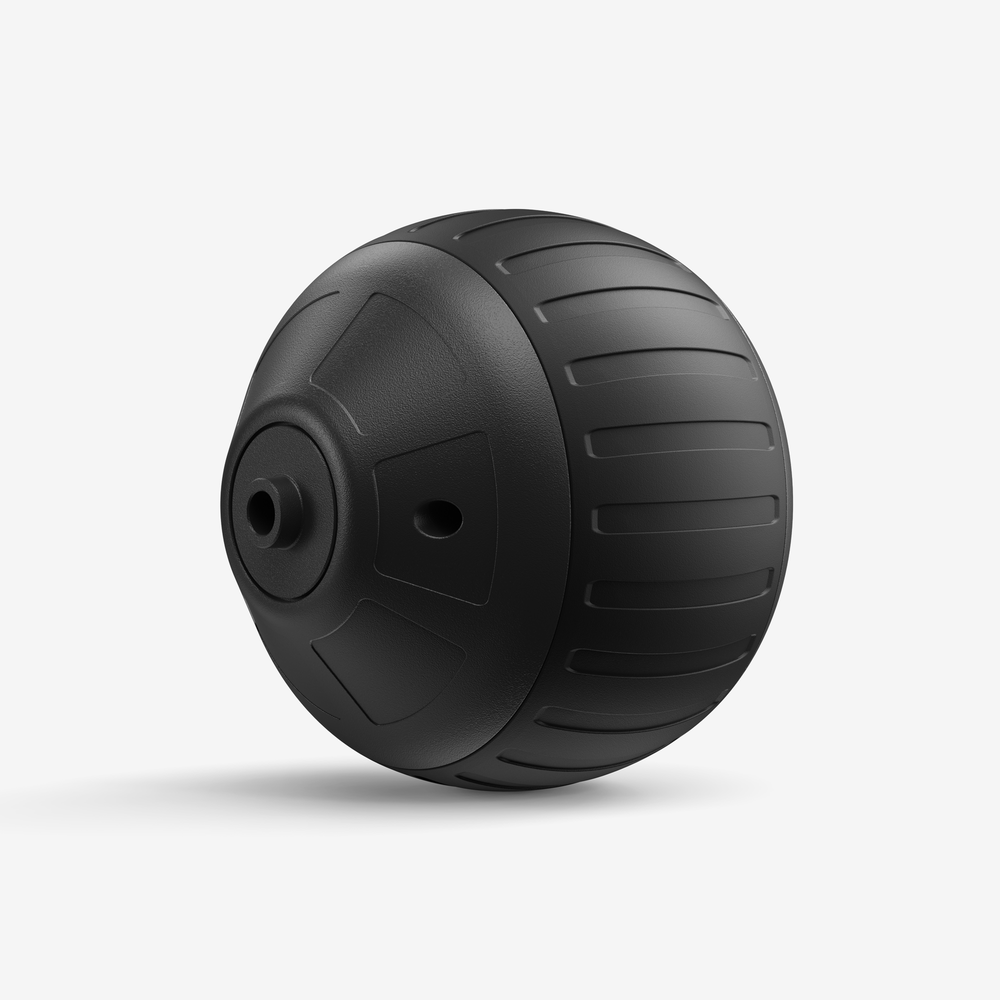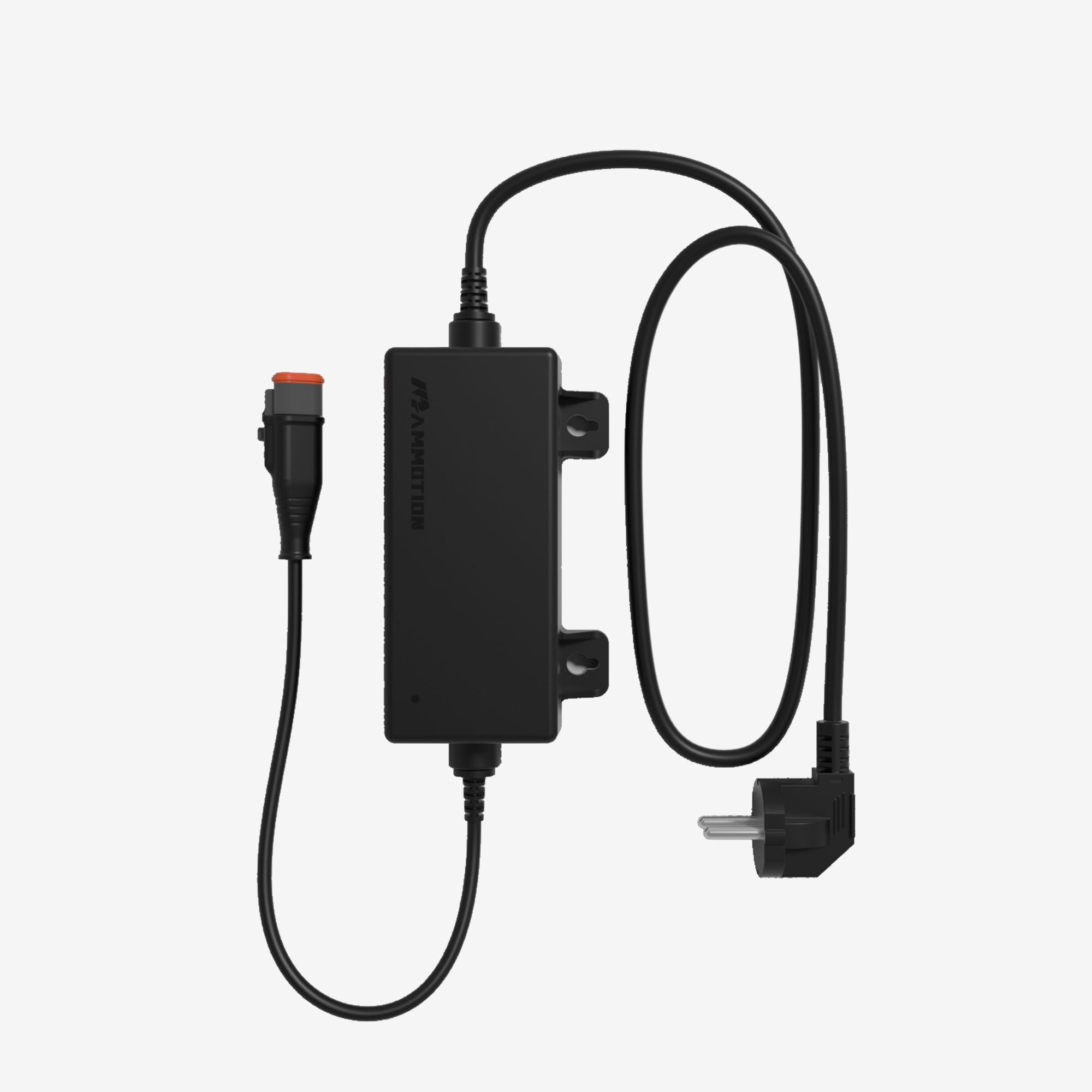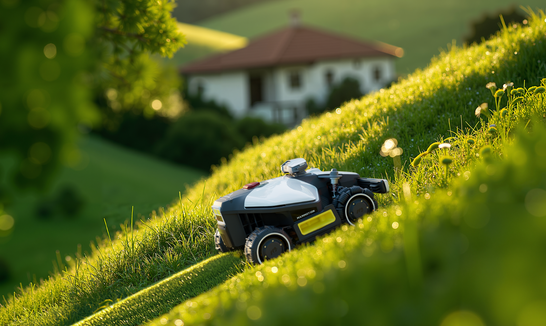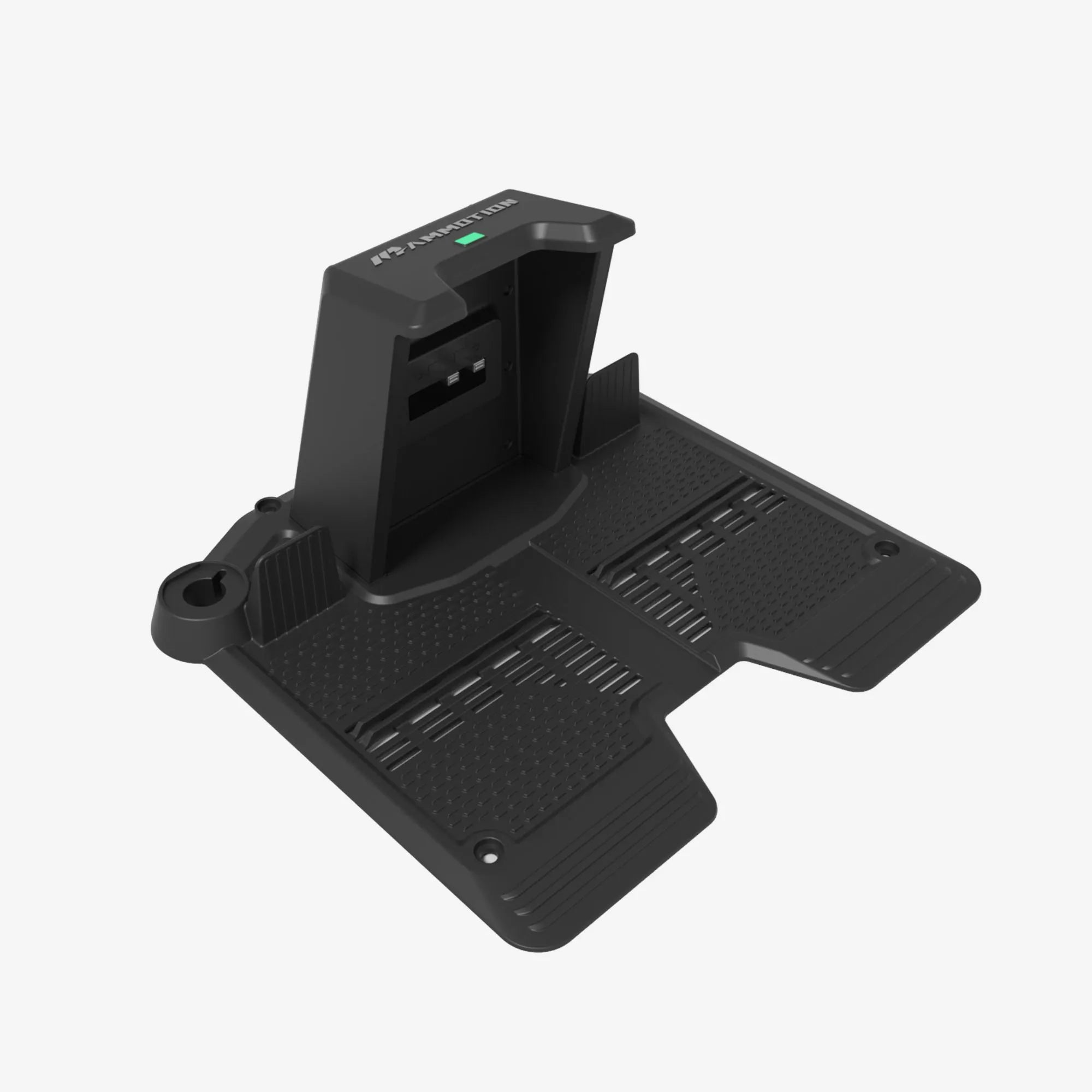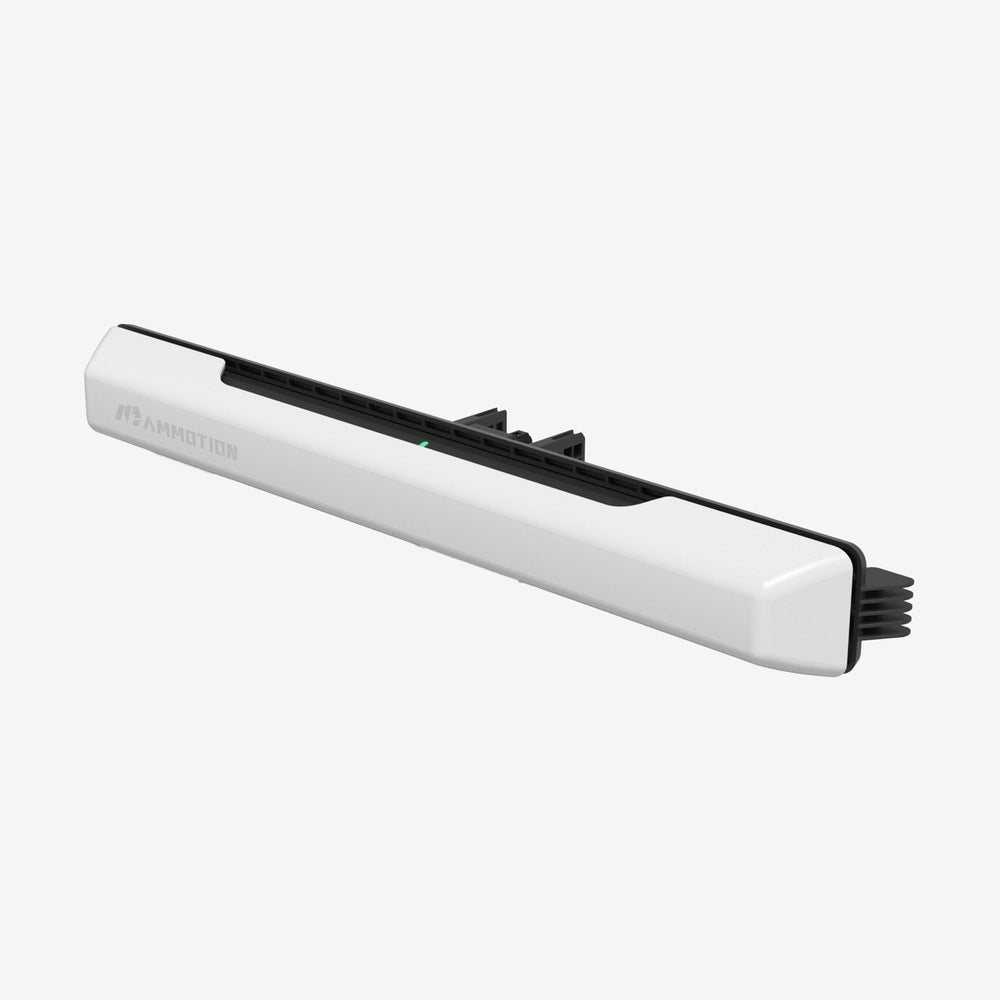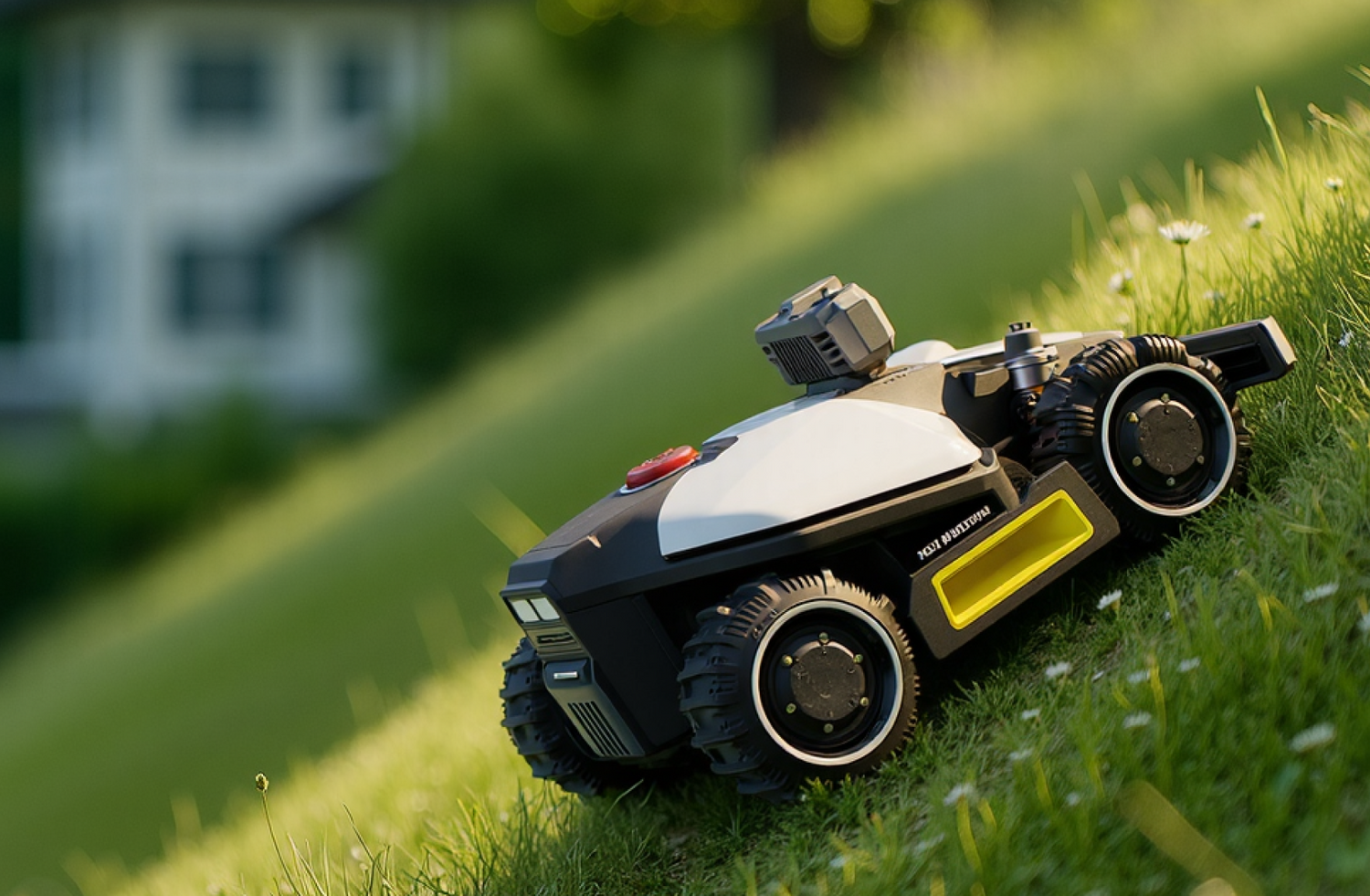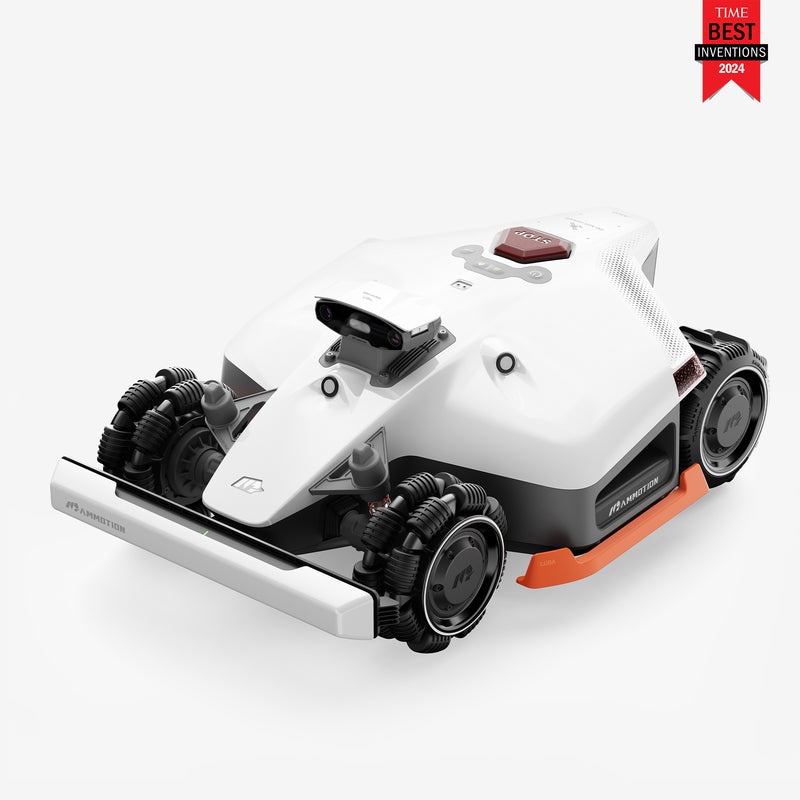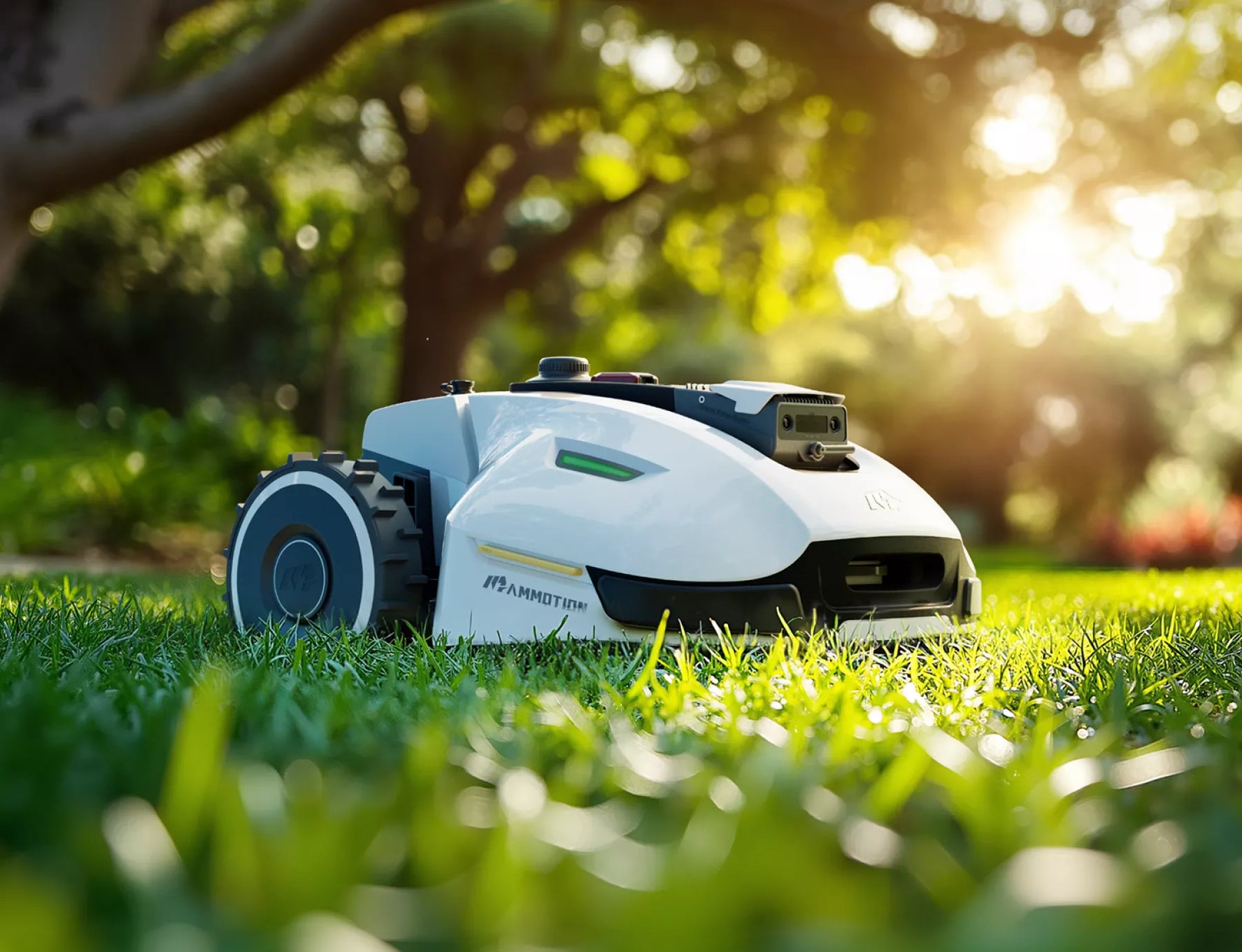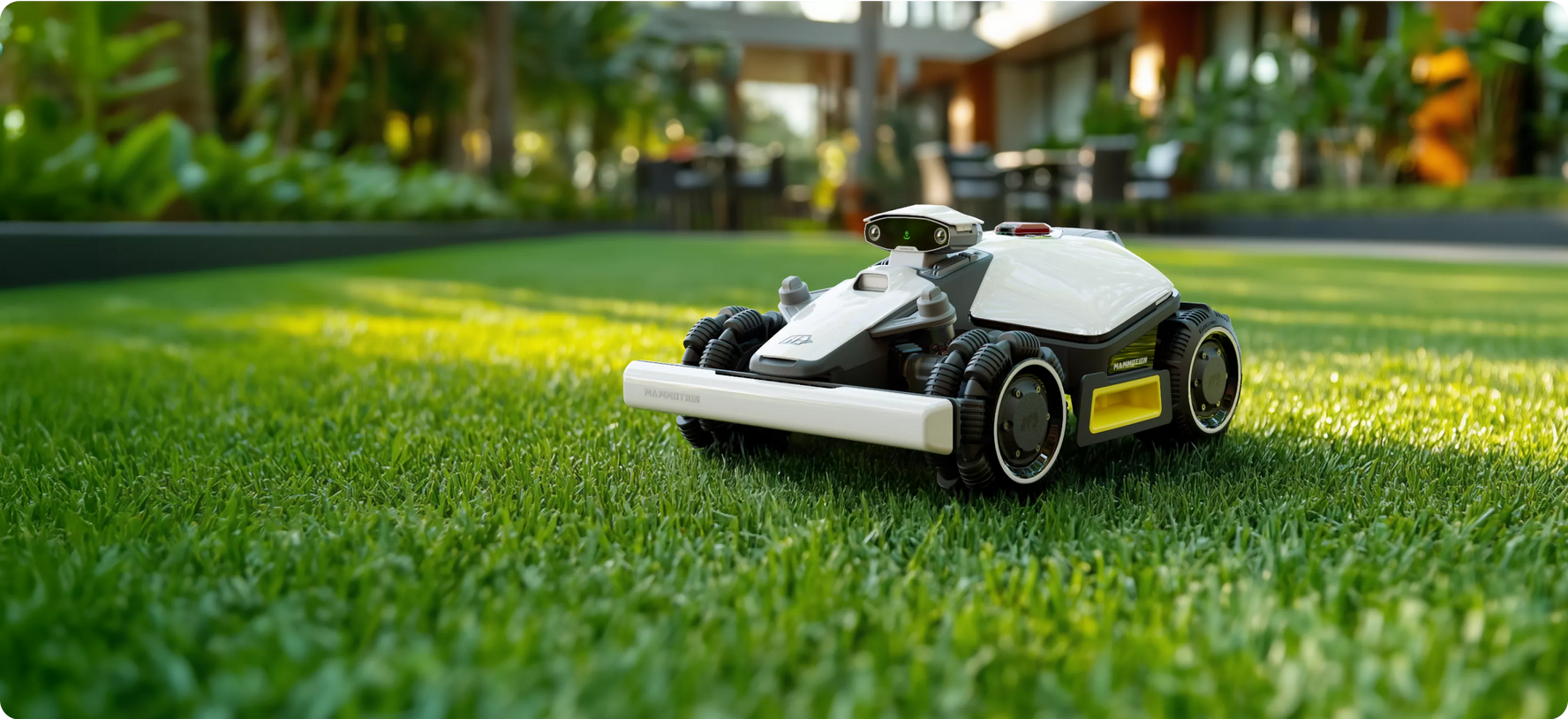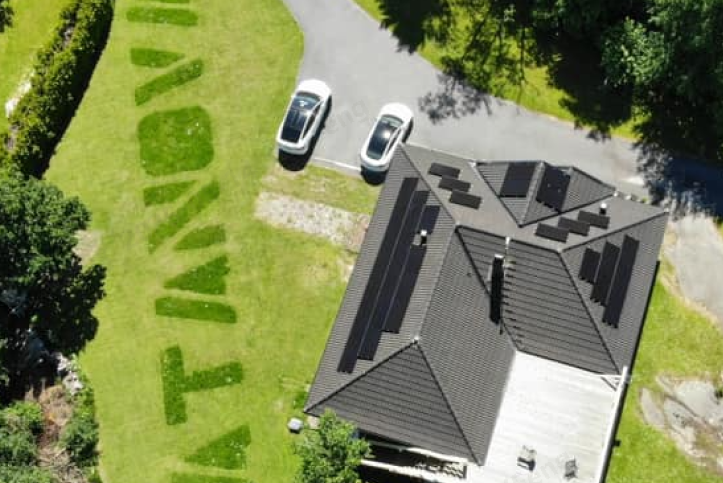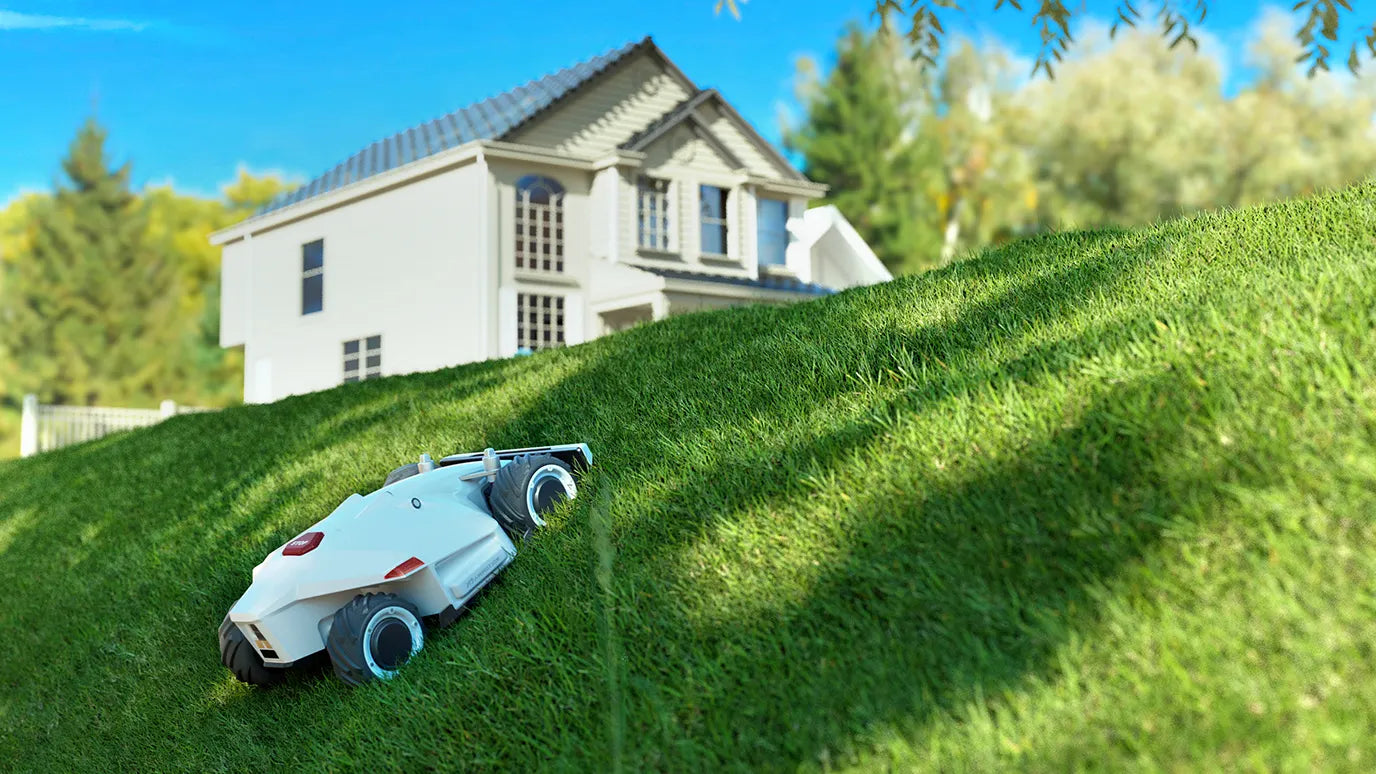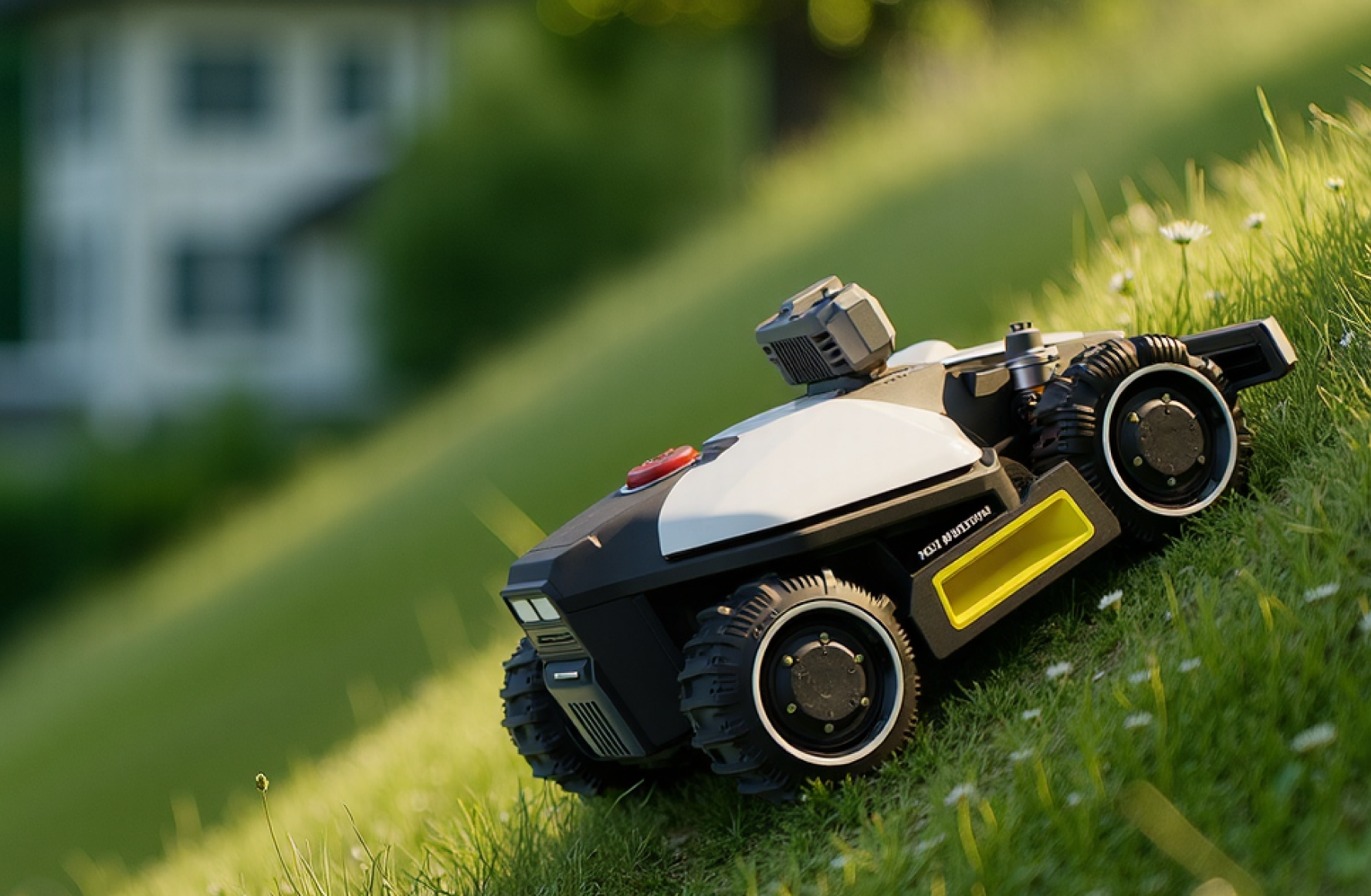Maintaining a beautiful lawn on uneven or sloped ground can be a real challenge — from scalped patches to mowers that lose traction or leave rough finishes. If this sounds familiar, you’re not alone. Many UK homeowners face the same struggle when mowing irregular lawns.
This article will guide you through how to choose the best lawn mower for uneven ground, comparing different types — cordless, electric, and robotic models like Mammotion’s LUBA AWD, designed for complex terrains. Whether you want precision, power, or automation, you’ll find practical insights here to make mowing effortless and efficient.
Part 1. Why Uneven Lawns Need Special Lawn Mowers
Uneven lawns are common across the UK due to natural soil settling, weather conditions, or garden landscaping. However, these irregular surfaces can make mowing frustrating and inefficient. The wrong mower might leave uncut patches, scalp the grass on raised areas, or even slide on damp slopes, risking both your safety and your equipment.
That’s why choosing the best lawn mower for uneven ground is crucial. Unlike standard flat-ground models, mowers designed for rough terrain come with special features such as adjustable cutting heights, wide wheels for better grip, and floating decks that follow the contour of the ground. These upgrades ensure that every section of your lawn — whether flat, hilly, or patchy — gets a clean and consistent cut.
- Safety First: Regular mowers can easily tip or slip on sloped lawns. A mower built for uneven ground has a lower center of gravity and traction-optimized wheels to keep you stable.
- Performance & Efficiency: Uneven terrain often causes uneven cutting. Specialized mowers use adjustable decks and torque-optimized motors to deliver consistent results without multiple passes.
- Lawn Health: Scalped or torn grass leads to brown patches and diseases. The right mower cuts cleanly, promoting healthier, thicker growth.
Part 2. What Makes a Lawn “Uneven”
An uneven lawn is more than just a cosmetic issue — it directly affects how efficiently you can mow and how healthy your grass grows. Uneven ground can include a variety of surface irregularities such as slopes, dips, bumps, compacted soil, or patches of thick, coarse grass.
For UK homeowners, this is a particularly common issue, as the country’s wet climate and soil composition make lawns more prone to surface movement and erosion.
2.1 Types of Uneven Ground
- Sloped Lawns – Common in suburban and rural areas, especially where gardens follow natural contours. They require mowers with good traction and stable handling.
- Dips and Depressions – Often caused by poor drainage or soil settling after heavy rain. These can trap moisture, making mowing slippery and uneven.
- Rough or Rocky Terrain – Some older gardens may have hidden stones or roots, making mowing risky for blades and motors.
Thick or Patchy Grass Areas – Inconsistent soil fertility leads to uneven growth, creating dense and sparse patches that require different cutting heights.
2.2 Common UK Causes of Uneven Lawns
The reasons for uneven lawns in the UK often trace back to environmental and maintenance factors:
- Clay-heavy soil: Found in many British gardens, clay expands when wet and contracts when dry, causing bumps and cracks.
- Rain erosion: Frequent rainfall washes away topsoil, leading to small dips and surface instability.
Improper landscaping or foot traffic: Repeated walking or garden equipment use compacts certain areas, while poorly leveled turf creates long-term unevenness.
2.3 The Problems Uneven Lawns Cause
If left unaddressed, uneven grass makes mowing inefficient and frustrating:
- Scalping – The mower blades cut too low on raised areas, damaging roots and leaving brown patches.
- Uneven cutting – Dips cause blades to miss sections entirely, leaving your lawn patchy.
- Mower tipping – On sloped or uneven ground, standard mowers can easily tilt or slip, posing safety risks.
To tackle these challenges, you’ll need a mower built specifically for uneven ground — one that provides excellent traction, adjustable cutting height, and a floating deck system that follows terrain contours.
Part 3. Key Features to Look for in the Best Lawn Mower for Uneven Ground
Choosing the right mower for uneven ground requires careful attention to specific features that directly affect performance, safety, and lawn health. Whether your garden is slightly hilly, has dips, or thick grass patches, the following elements can make all the difference.
3.1 Self-Propelled Drive & Stability
One of the most important features for tackling uneven lawns in the UK is a self-propelled system. Self-propelled mowers reduce the physical effort required to push the machine across slopes or rough patches. They also improve control on inclines, preventing tipping and ensuring consistent cutting.
Benefits:
- Reduces operator fatigue, especially for larger lawns or sloped terrain.
- Provides steady forward motion, minimizing the risk of missed patches.
- Improves safety on hills and uneven ground.
When shopping for the best cordless lawn mower for uneven ground UK, look for models labeled “self-propelled” or “drive-assisted” to ensure smooth handling on irregular terrain.
3.2 Adjustable Cutting Height
Adjustable cutting height is essential to avoid scalping the grass or damaging the lawn. On uneven ground, dips and rises can cause standard mowers to cut too low in some areas while leaving other spots untouched.
Key points:
- Look for mowers offering multiple height settings (ideally 25–75mm).
- Quick-adjust levers allow easy height changes without tools.
- Protects blades from hitting roots or rocks.
This feature is particularly critical for best electric lawn mower for uneven ground UK users, where consistent cutting without damaging turf is a priority.
3.3 Lightweight or Hover Design
For smaller or moderately uneven gardens, lightweight mowers or hover-style models offer maneuverability that heavier machines cannot match. They glide easily over bumps, reducing strain and allowing tighter navigation around obstacles like flowerbeds.
Advantages:
- Easy to carry or push on small plots.
- Minimizes soil compaction on soft areas.
- Ideal for intricate lawn layouts or terraces.
3.4 Traction & Wheel Design
Traction is crucial for maintaining stability. Wider wheels or treaded designs improve grip on wet or uneven surfaces, preventing slips and reducing the risk of damage to the lawn.
| Type | Description | Typical Models / Features |
|---|---|---|
| Large rear wheels | Smooth over bumps | Sloped and rough gardens |
| Treaded tires | Better grip on wet ground | UK rainy conditions |
| All-wheel drive (AWD) | Maximum traction | Steep or irregular lawns |
3.5 Power Type: Petrol vs. Electric vs. Cordless vs. Robotic
The power source affects mobility, runtime, and performance:
| Power Type | Pros | Cons | Recommended For |
|---|---|---|---|
| Petrol | High power, long runtime | Noisy, requires maintenance | Large, hilly, or thick grass lawns |
| Electric (corded) | Lightweight, low maintenance | Cable limits movement | Small uneven lawns |
| Cordless / Battery | Flexible, quiet, easier start | Battery limits runtime | Medium-sized uneven lawns; best cordless lawn mower for uneven ground UK |
| Robotic (e.g., Mammotion LUBA AWD) | Fully automatic, handles slopes & rough terrain | Higher upfront cost | Large, complex, uneven lawns; minimal effort |
Part 4. How to Choose the Right Lawn Mower for Your Uneven Garden
Selecting the perfect mower for an uneven garden involves more than just picking the most powerful machine. The right choice ensures safety, efficiency, and healthy grass growth. Follow this step-by-step guide to identify the mower that best suits your UK lawn.
Step 1: Assess Your Lawn Size and Slope
Begin by measuring your garden’s total area and identifying steep slopes, dips, and high-traffic sections.
- Small uneven lawns (up to 500m²) are usually manageable with lightweight hover or cordless electric mowers.
- Medium lawns (500–800m²) with moderate slopes benefit from self-propelled or cordless battery-powered models with good traction.
- Large or heavily sloped lawns (>500m²) may require ride-on or robotic mowers like Mammotion LUBA AWD for consistent performance without excessive physical effort.
Step 2: Consider Power Source and Terrain Traction
Next, evaluate which power type suits your lawn and mowing habits:
- Petrol mowers: High power, long runtime, good for large or thick grass areas; heavier to push on slopes.
- Electric corded mowers: Lightweight and eco-friendly, best for smaller uneven lawns; limited by cable length.
- Cordless mowers: Quiet, low maintenance, flexible; battery runtime may limit large areas.
- Robotic mowers: Fully automatic, perfect for complex uneven gardens; features like AWD and AI navigation manage slopes and obstacles.
Also, pay attention to wheel design and traction. Wider, treaded wheels or AWD systems improve stability on slopes and uneven patches.
Step 3: Choose Cutting Width and Adjustability
Cutting width impacts efficiency. Larger decks cover more ground in less time but can be harder to maneuver on uneven terrain.
- For small or intricate lawns, a 30–40cm cutting width is easier to navigate.
- For medium or large lawns, 40–50cm is ideal, balancing coverage and control.
- Ensure the mower offers adjustable cutting height (25–75mm) to prevent scalping in dips and over-cutting on raised areas.
Step 4: Evaluate Safety and Convenience Features
Key features for uneven ground include:
- Blade brake/clutch: Stops the blade immediately when lifting the mower or encountering obstacles.
- Ergonomic handles and self-propelled drive: Reduce strain on slopes.
- Debris and stone deflectors: Protect both operator and mower.
These features enhance both safety and comfort, making mowing less tiring and reducing risk of injury.
Step 5: Consider Smart Solutions (Robotic Mowers)
For busy homeowners or large, uneven gardens, robotic mowers are an increasingly popular option. Features such as:
- Multi-zone management – Handle multiple lawn areas automatically.
- Slope handling up to 75% – Ideal for hilly gardens.
- RTK GPS navigation and obstacle avoidance – Maintain precision and efficiency.
Part 5. Top Picks: Best Lawn Mowers for Uneven Ground in the UK
| Category | Model | Power Type | Noise | Environment Impact | Human Effort Needed | Best For |
|---|---|---|---|---|---|---|
| Robot | Mammotion LUBA 2 AWD | Robotic AWD | Low (automatic) | Zero emissions during operation | Minimal (set up & monitor) | Any large uneven & sloped lawns; multi-zone management |
| Cordless | Husqvarna LB144i Battery | Battery | Low | Zero emissions, eco-friendly | Moderate (push when needed) | Medium uneven lawns; moderate slopes |
| Electric | Electric Hover Mower 1200 W | Electric corded | Low | Zero emissions, eco-friendly | Moderate (push & guide) | Small to moderate uneven lawns; minor bumps |
| Petrol | Honda HRH 536 HX | Petrol | High | CO₂ emissions; fuel required | High (push/self-propelled) | Large rough terrain lawns; thick grass; steep slopes |
5.1 Best Robot Lawn Mower for Uneven Ground (Editor’s Pick)
Mammotion LUBA 2 AWD — A fully automatic, all‑wheel drive robotic mower designed specifically for uneven lawns with slopes, bumps and varying terrain.
- Highlights: NetRTK positioning, multi‑zone management, slope handling.
- Ideal for: Large gardens with mixed terrain where minimal manual effort is desired.
- Considerations: Higher initial investment, but offers premium convenience for complex lawns and.It is worthwhile to invest time and energy in liberating people in the long term.
5.2 Best Cordless Lawn Mower for Uneven Ground UK
Husqvarna LB144i Battery — A high‑quality cordless mower, offering freedom of movement and suitable for moderate uneven lawns.
- Benefits: No cable restriction, good manoeuvrability on bumps.
- Ideal for: Medium‑sized plots with some dips and uneven grass patches.
- Considerations: Battery runtime could limit large areas. The machine still requires human operation, and needs to be charged or have its batteries changed with more noise; it cannot mow the lawn without human intervention.
5.3 Best Electric Lawn Mower for Uneven Ground UK
Electric Hover Mower 1200 W ø30cm — A corded electric hover‑type mower which glides over minor uneven surfaces, ideal for smaller gardens.
- Benefits: Lightweight, excellent for small to moderate uneven lawns, particularly with bumps.
- Ideal for: Compact yards with irregular surfaces, where manoeuvrability matters.
- Considerations: Cable limits reach, less power for thick grass. This is still typical human-powered lawn mower with more noise.
5.4 Best Petrol Lawn Mower for Rough Terrain
Honda HRH 536 HX 53 cm — A self‑propelled petrol mower built for tougher terrain and large, uneven lawns.
- Benefits: Strong traction, large deck width, high durability on rough ground.
- Ideal for: Large gardens with steep slopes, thick grass or rough patches.
- Considerations: Heavier, higher maintenance, and more noise than electric/cordless options. Besides, gas-powered mowers emit pollutants such as CO, NOx, and hydrocarbons.
Part 6. Why Robotic Mowers Are the Future for Uneven Ground
Robotic mowers are revolutionizing lawn care, particularly for uneven lawns UK. Their advanced technology provides solutions that traditional mowers can’t easily match.
6.1 Consistent Precision
Robotic mowers like the Mammotion LUBA 2 AWD use RTK and AI-based navigation to maintain consistent cutting even on slopes, bumps, and multi-zone gardens.They adjust cutting height automatically, preventing scalping on dips or ridges.
6.2 Time and Effort Savings
Fully autonomous operation means homeowners spend minimal physical effort managing challenging lawns. Scheduled mowing ensures grass stays healthy without frequent manual intervention.
6.3 Safety Advantages
Sensors detect obstacles, reducing the risk of tipping or collisions on uneven terrain. With built-in emergency stop features, robotic mowers reduce accidents compared to petrol or manual push mowers on slopes.
6.4 Environmental and Economic Benefits
Electric-powered robotic mowers are quiet and emission-free, ideal for eco-conscious UK homeowners. Long-term savings on petrol, maintenance, and labor make them a cost-effective choice for uneven lawns.
6.5 Adaptability
Advanced robotic mowers handle multiple zones, slopes, and uneven surfaces with minimal setup. Integration with smart home systems allows remote monitoring and control, bringing precision lawn care into the digital age.
Robotic mowers represent the future of mowing uneven ground, combining efficiency, safety, and precision, making them particularly suitable for UK homeowners dealing with sloped, bumpy, or multi-zone gardens.
Conclusion
By considering terrain, lawn size, and personal effort, homeowners can select the most suitable mower for their garden. Choosing the best lawn mower for uneven ground UK is essential for safety, efficiency, and achieving a clean, even cut. Robotic mowers like the Mammotion LUBA 2 AWD offer automated precision, ideal for large, bumpy, or sloped gardens.
Frequently Asked Questions
1. Can a standard electric lawn mower handle uneven grass?
Standard electric mowers can manage minor bumps, but for truly uneven lawns or slopes, it’s better to use the best electric lawn mower for uneven ground UK with adjustable cutting height and good wheel traction.
2. Are cordless lawn mowers suitable for large uneven gardens?
Cordless mowers are ideal for medium to moderately uneven lawns. For very large or hilly gardens, a robotic mower like the Mammotion LUBA 2 AWD may provide better efficiency with less effort.
3. How does battery life affect mowing uneven ground?
On uneven terrain, battery-powered mowers work harder, which can shorten runtime. Choosing the best cordless lawn mower for uneven ground UK with long-lasting batteries ensures the mower completes larger sections without recharging.
4. Do robot lawn mowers work on steep slopes?
High-end robotic mowers designed for uneven lawns, such as the Mammotion LUBA 2 AWD, can manage slopes up to 45% and navigate bumps while maintaining a consistent cut.
5. Is petrol better than electric for rough terrain?
Petrol mowers provide stronger traction and longer runtime, making them suitable for rough uneven ground. However, they require more maintenance and produce emissions compared to cordless or electric options.
6. How often should I mow uneven lawns?
For uneven lawns, frequent mowing prevents long grass from becoming difficult to cut on slopes and dips. Using a mower suitable for uneven grass ensures the blades remain effective and the lawn stays healthy.
7. Can I convert my garden to be more mower-friendly?
Minor landscaping adjustments like filling dips, leveling small bumps, and removing large obstacles can make mowing easier. Pairing these changes with the best lawn mower for uneven ground UK will improve cutting efficiency and reduce wear on the mower.
8. Maintenance Tips for Uneven Lawns
Regularly sharpen blades, prepare the lawn, maintain your mower, and adjust mowing height to ensure a healthy, even cut.


